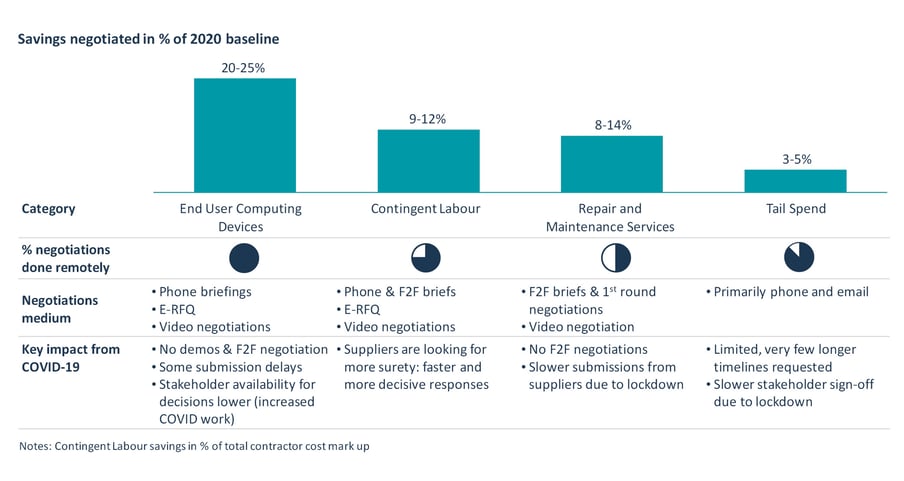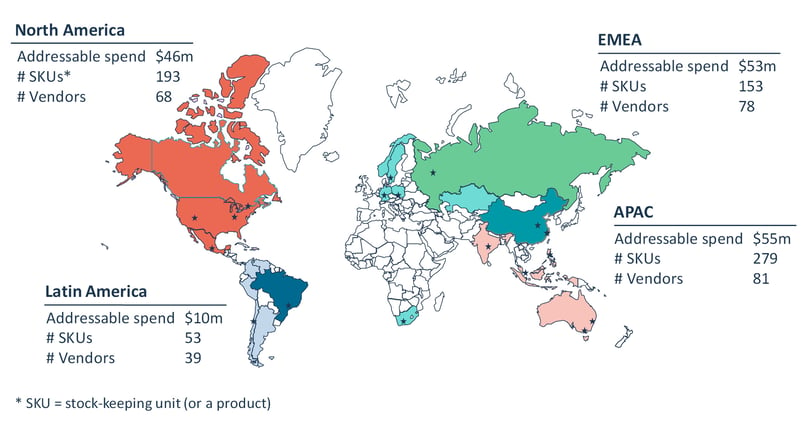Input prices and product availability are rapidly changing, supply chains are disrupted, and workforce availability requires companies to rethink the way they do sourcing. While this disruption obviously constitutes a threat to business continuity it also opens significant opportunities as suppliers compete for cashflow and prices soften.
Remote sourcing helps operations to react fast, regaining efficiency in the new COVID-19 environment to take advantage of the emerging buyers’ market.
A major Australian organisation with an extensive retail footprint had embarked on a large cost transformation. We were helping reduce their $150+m of third party spend. Partway through this work, the COVID-19 pandemic required a rapid transition to completely remote operations – this included supplier negotiations, stakeholder and team management practices.
A global chemicals and plastics organisation with 121 locations in over 23 countries engaged us to drive savings across multiple categories. Remote sourcing was deployed to drive results from a fractured vendor base at pace - none of the potential vendors was able to supply more than 15% demand. It included the setup of two 24-hour call centres (incl. Mandarin speaking) and issue of 1,000+ e-RFPs globally.


Director

Director, Asia Procurement Lead

Partner

Partner
| We actively reduce the climate impact from our operations and invest in community-based climate solutions to balance remaining carbon emissions |